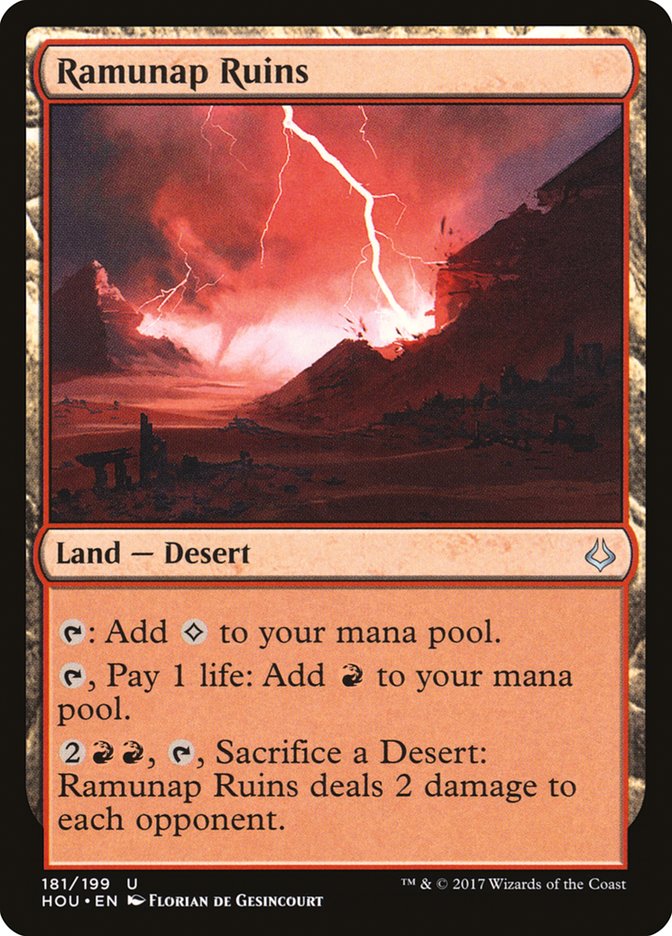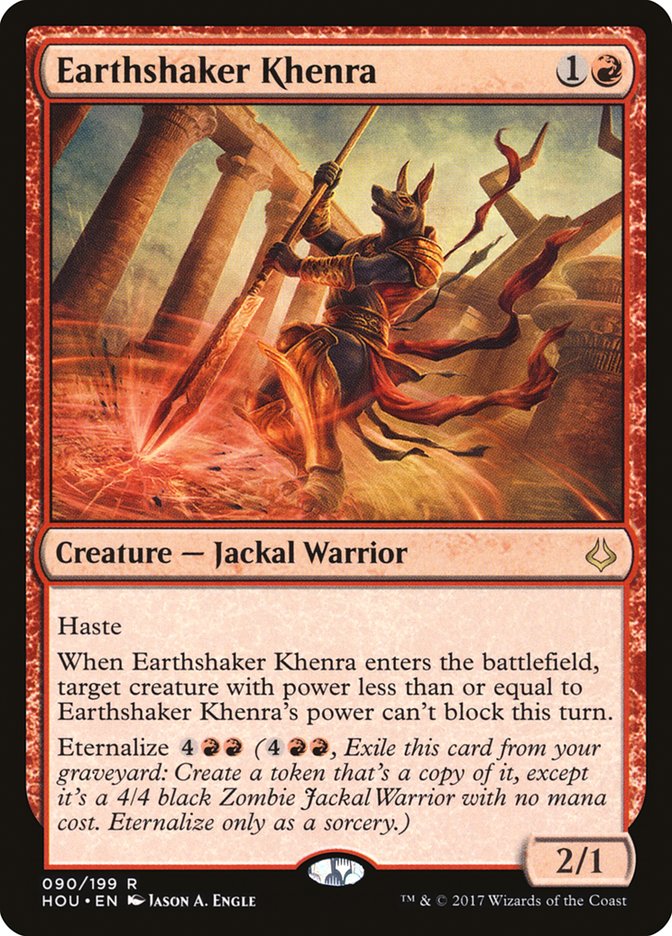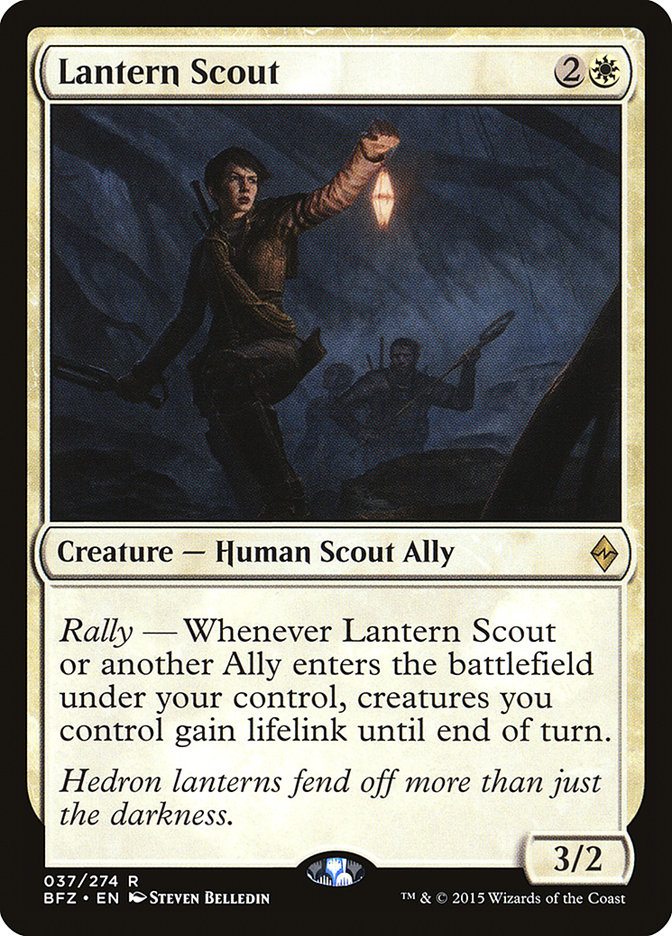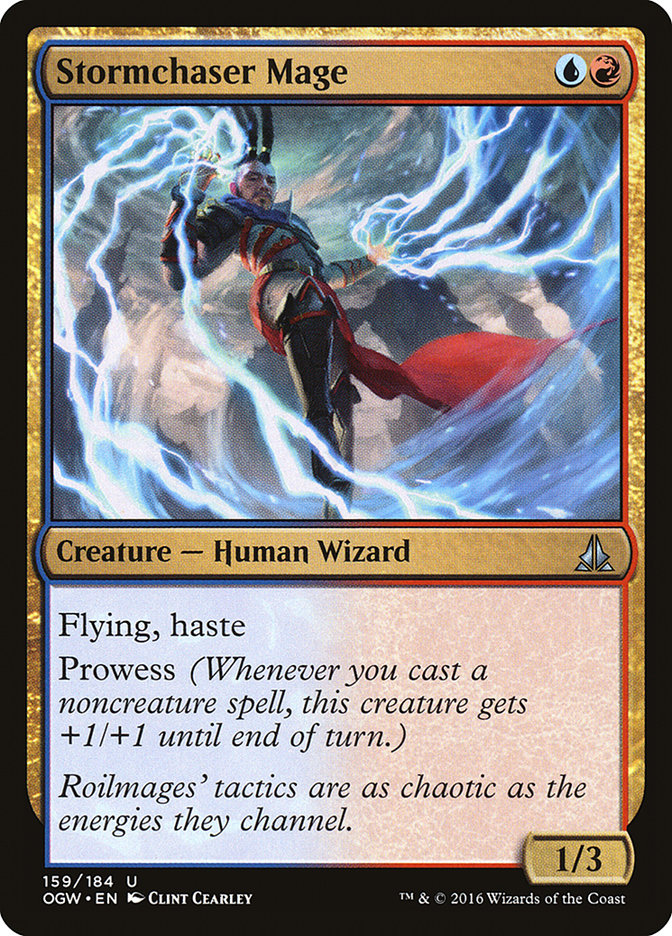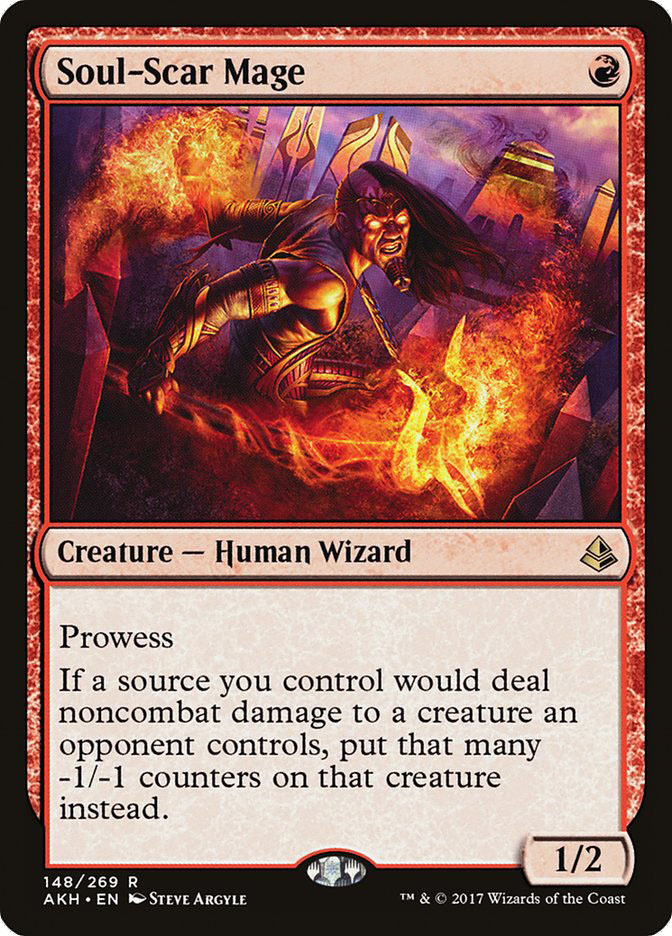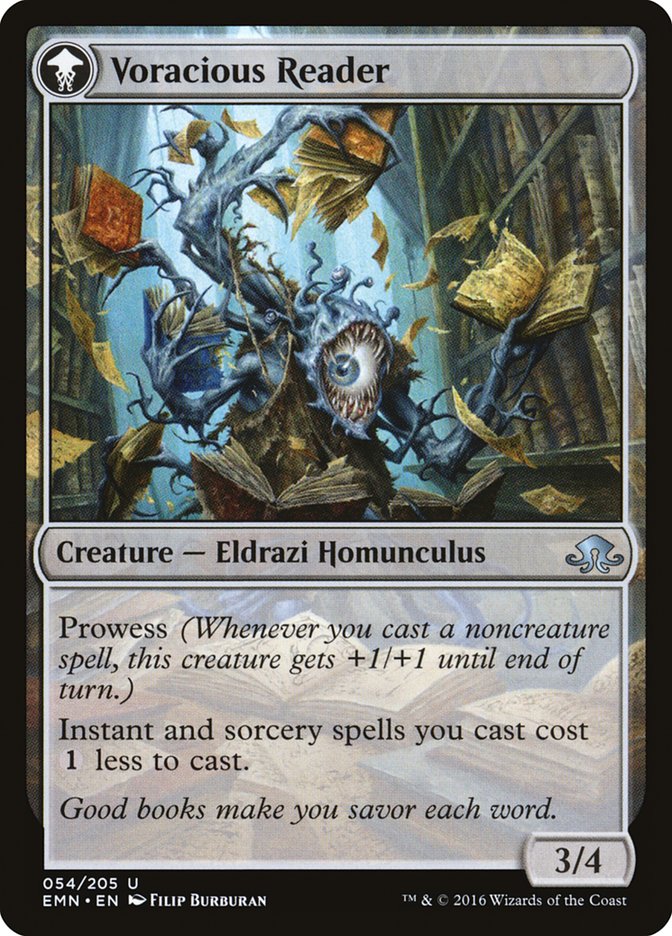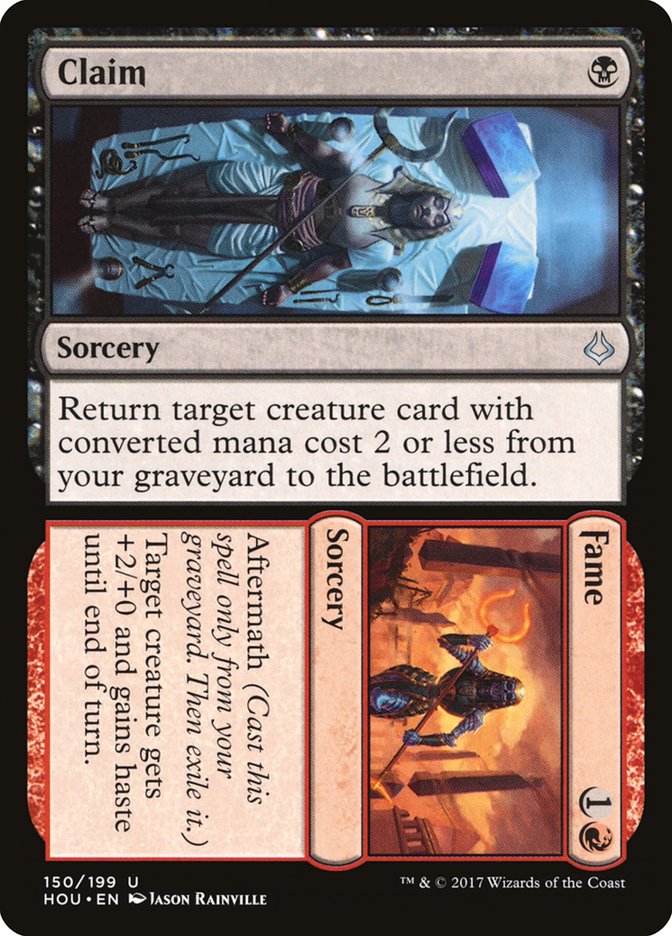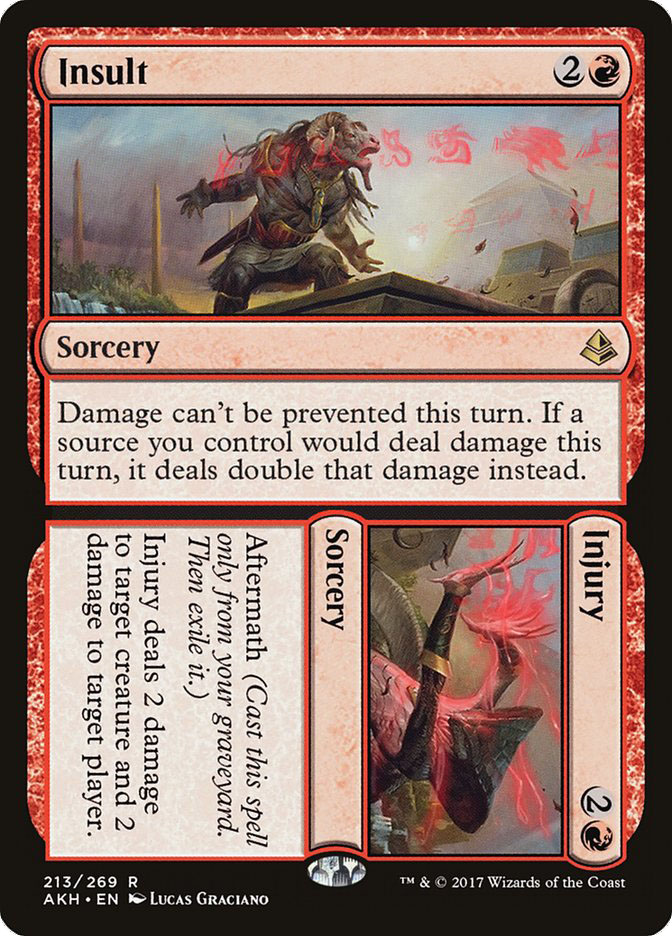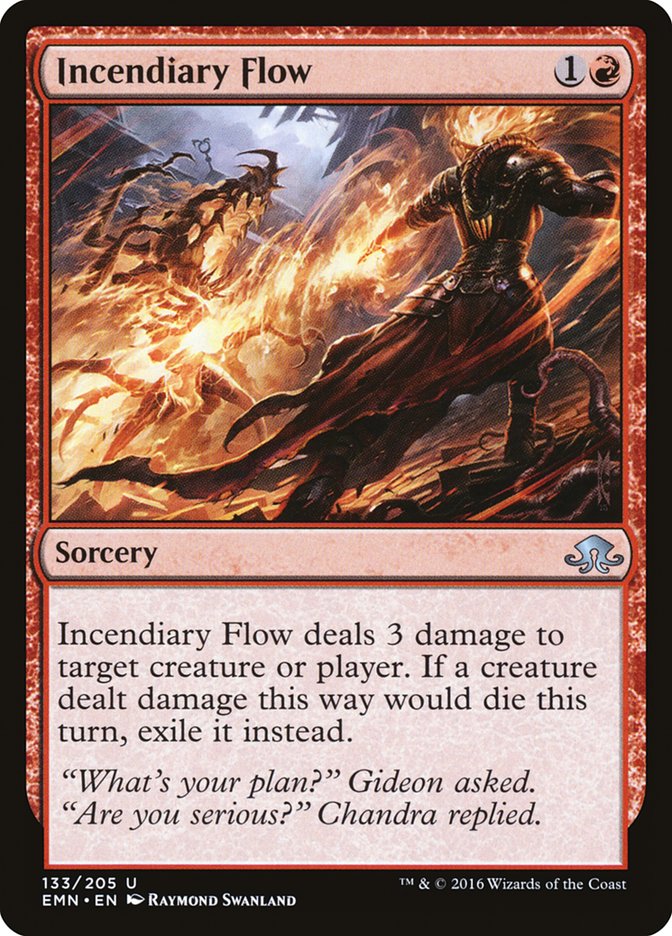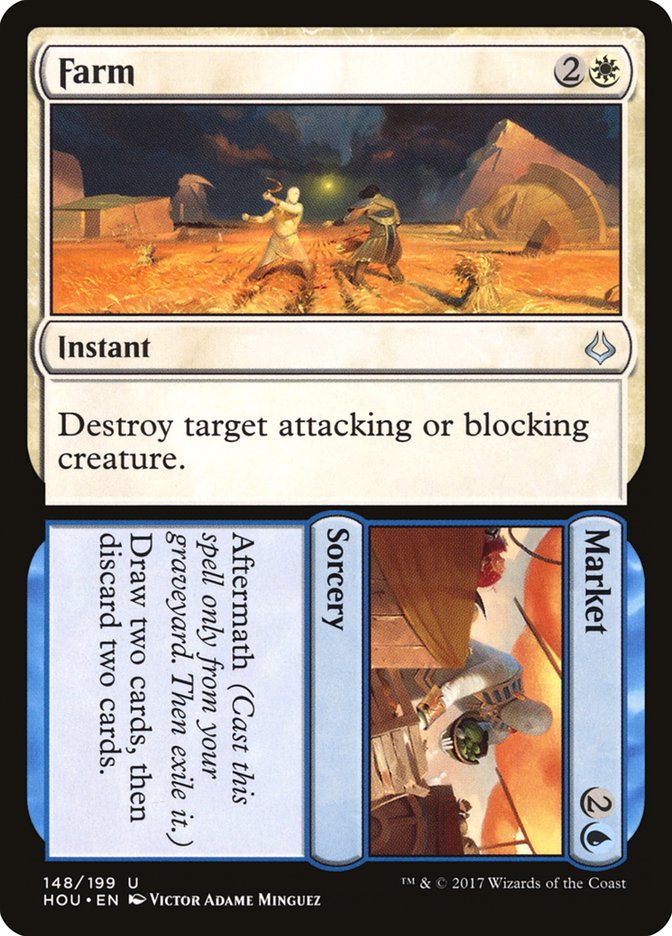Red, red, red. That’s all anybody talks about anymore.
We get it! You all are good!
A successful red deck has a long-lasting impact. They are usually easy, cheap, and straightforward to pick up, pilot, and sideboard, meaning that a variety of players will get it to have a “good” deck in their arsenal alongside more fun Standard decks, or they’ll return to the format with the prospect of a powerful, inexpensive deck. We’ve seen it plenty before; mono-red has a habit of being perhaps the stickiest, most perennial archetype in Magic’s history. It’s easy to succumb to the draw of mono-red.
I’m a victim, too.
Creatures (29)
- 2 Eldrazi Obligator
- 2 Hanweir Garrison
- 4 Bomat Courier
- 3 Kari Zev, Skyship Raider
- 3 Flameblade Adept
- 3 Combat Celebrant
- 4 Bloodlust Inciter
- 4 Bloodrage Brawler
- 4 Earthshaker Khenra
Lands (21)
Spells (8)
Sideboard

I had a much more ambitious deck idea for Game Day on August 5th, but after failing to trade for a couple of critical pieces and missing most of my sideboard, I audibled to my own, now dated take on the mono-red archetype. I defeated a mono-red mirror, lost to a very spicy four-color God-Pharaoh’s Gift brew, beat a G/U planeswalker deck, and finally cornered a delirium opponent in Round 4 to lock Top 8, where I beat a Crested Sunmare brew and lost in the semis to a deck that was literally constructed with mono-red in mind. I mean, he maindecked Lantern Scout, for heaven’s sake.
The deck still put up a great fight against hate, and the God-Pharaoh’s Gift alternate line still works fairly well. Their Abrades have to aim at creatures, so I’m not too worried about keeping them in during a variety of matchups. Speaking of which, Abrade is phenomenal. But we all knew that.
So, wait, why are we revisiting red again?
Red is about speed, and while we’ve normally been able to rely on burn spells to finish off the opponent, we’ve had to resort to subpar sorceries and Falter effects to push our creatures through for the last few points. Nothing wrong with that, but I kind of love casting spells, seeing your opponent’s face fall, and crashing with the final points of damage, whether it’s with a Lightning Bolt or a Lightning Elemental.
A particular ability combines this level of fun: prowess.
While originally spread across three colors, the ability’s retreat to its Islands and Mountains makes a lot of sense, and it means they get the best cards that interact with the spells we cast. Red and blue often have great spells that work with a prowess-focused gameplan, either because they allow you to sift through your deck for more triggering spells or to shove several cheap spells into the same turn. Our current bevy of available prowess creatures reflects the red side of prowess well: a swelling furnace, waiting for the right moment to burst.
Prowess has been a favorite of players who love casting noncreature spells, but Amonkhet and Hour of Devastation brought us a new mechanic that makes it all the better: aftermath.
Spells with Aftermath are cast twice, which means two triggers, either together or apart, and you don’t even have to cast the other half at the same time. Whether you discard an aftermath card and cast it later or only ever plan to cast the first half, the inherent flexibility and value makes them exceptional build-arounds or last-minute additions alike.
Because you’re casting them twice, any discount you get doubles up. That’s where the best little prowess creature in the format comes in.
This inquisitive little scamp turns into one of the objectively most powerful prowess creatures in Magic’s past, even considering such runners as Monastery Mentor. The trick has always been getting it to the point where it flips. It feels terrible to cast a 1/1 that does nothing, but there are ways I’ve gotten around it in the past, like Ojutai’s Command. Curious Homunculus gets much better when you’re not casting a 1/1 for two, but it does other synergetic things in such a deck.
Hour of Devastation revitalized the original concept presented by Ojutai’s Command.
This little number allows you to resurrect not just Curious Homunculus but any of the other cheap prowess creatures as well. Stormchaser Mage returns to fight, ready to swing. Soul-Scar Mage comes back, and casting Fame makes it a 4/3, roaring across the table for serious damage from a one-drop.
Things really start to get explosive, though, when you add Insult to Injury.
In a clever combination of word play and game mechanics, this sorcery can be easily seen as overkill, pushing you far above the edge for a lethal kill or burn spell. However, it does two things for prowess creatures; it triggers them, of course, and it makes them hit way harder. With just one Stormchaser Mage, you’re jumping from one to four damage. Casting both halves lets you deal six damage in combat, four to a creature, and four more to the opponent. With enough cost reductions, casting both halves will be a breeze. And if they kill our cost reducer, just reanimate it.
This puts us into Grixis; no complaints here.
Get out your storm counters!
Creatures (12)
Lands (22)
Spells (26)
- 4 Strategic Planning
- 4 Incendiary Flow
- 4 Cathartic Reunion
- 2 Insult
- 2 Cut
- 3 Reduce
- 4 Claim
- 1 Refuse
- 2 Consign
Sideboard

This deck either works like a charm, or it really, really doesn’t.
Creatures
The deck has a decent blend of direct damage, either reactive (Refuse) or proactive (Ribbons), and able-bodied creatures. Abrade is still one of the best spells to disrupt our plan, so being able to even threaten moving out of Abrade range is pretty exciting when it comes to our opponent’s play decisions.
Baral, Chief of Compliance is a common enough combo piece in both Modern and in niches in Standard. A single copy is enough here, as Claim can always bring it back from the dead. Plus, you can then cast Fame for a single red mana and get in there for three!
The other creatures are obvious prowess choices, but the numbers are important. Soul-Scar Mage is great and all, but it’s also not a perfect fit every time. Unlike some of the larger, more evasive prowess creatures, a 1/2 will not do a lot against a big ground creature. Similarly, Stormchaser Mage is great as a single attacker, or even as a pair, but you don’t want an opener with two of them; you want a noncreature spell to make the one you draw good enough. With Claim // Fame, you can play a slightly smaller amount of creatures that matter, as you have ways to recover those who you’ve lost in battle or tossing aside to Cathartic Reunion.
Spells
Strategic Planning, though I never played it before this Standard, has proved to be the Anticipate I’ve always…anticipated. Anticipate would be absolutely brutal if you put the other two cards in your graveyard and if it were instant. I found myself Anticipating on my main phase enough that I figured Strategic Planning would be similar. It’s different from Cathartic Reunion, its red counterpart, but they both serve to get the right cards in your hand and the wrong ones in your graveyard. As was the case with Geistblast’s graveyard-activated function, Cooperate can copy Cathartic Reunion, letting you discard two cards and draw six. This time, though, you get cost reductions, making casting and copying monumentally more frequent.
Incendiary Flow felt like the right burn spell for the maindeck with its ability to punch the face in a slogging battlefield stall while also exiling problem creatures like Spell Queller, Prized Amalgam, and Gisela, the Broken Blade and her lifelink. Direct damage gets way better with cost reduction and Insult, too, making it harder for your opponent to predict which turn you’ll launch your alpha strike.
The deck has a strong U/R presence, but the black spells apply an important level of depth. Claim // Fame has already been explained, but Cut // Ribbons is the other red and black spell that bears a mention. Cut is still one of the most powerful removal spells in red; you’re sacrificing exile and face targeting to add another tick of damage and provide great reach at the end of the game; remember, we’ve got cost reduction, so X could already start as one or two, plus we’ve got creatures on the battlefield who love that prowess trigger!
How It Went
I had the opportunity to test this fairly inexpensive deck on Magic Online, and I was really pleased with its matchups against such decks as U/W God-Pharaoh’s Gift, B/G Delirium, and even U/R Control, a matchup that I thought would be a struggle.
After eight matches against local decks and winning six of them, losing to a strange U/G Turbo Fog deck and a Mono-White Oketra’s Monument list, I’m very happy with the initial pass of the deck. Aftermath cards were fairly decent, but there are plenty of opportunities for other, more accessible spells to fill their place. Refuse // Cooperate was actually difficult to cast on the front-end, though I did smack a guy casting an Elder Deep-Fiend for eight, which felt nice. Cut // Ribbons was excellent, and Reduce // Rubble was either the best reactive card possible or a total dud. Insult // Injury did exactly what I’d expect it to, but it was a finisher most of the time, not a tempo play. Consign // Oblivion overperformed, and the occasional Oblivion value was thrilling.
All in all, the biggest adjustments I’d make would be numbers. The deck was truly explosive, and the sideboard provided enough depth to keep the deck strong against a variety of matchups.
Grixis is definitely one way to go, but the U/R core of the deck can be moved across the other shards, too. Jeskai offers cards like Farm // Market, Onward // Victory, and straightforward removal spells like Declaration in Stone and Cast Out. Temur gives you protection in combat with cards like Blossoming Defense. No matter which direction you go, you’ll have fun crashing for a surprise million.
How would you build prowess these days? Does Stormchaser Mage have one last chance to find glory in Standard?


